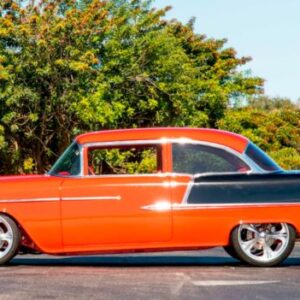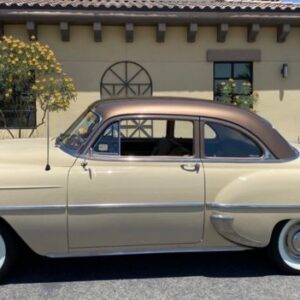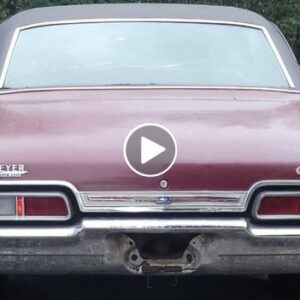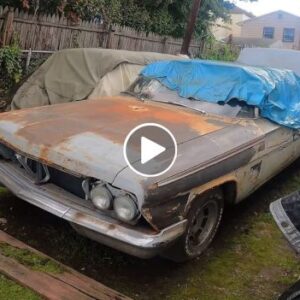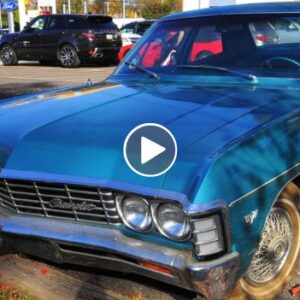The 1973 Volvo 1800ES is a classic sports wagon that has become a sought-after collector’s item among car enthusiasts. As the last production year of the Volvo P1800 series, the 1800ES stands out due to its unique design, performance, and limited availability. This article will dive into the history, specifications, and legacy of the 1973 Volvo 1800ES, so buckle up and enjoy the ride.
1. The Birth of the Volvo P1800 Series
The Volvo P1800 series was initially introduced in 1961 as a stylish sports car aimed at the American market. With its sleek body and innovative design, the P1800 quickly gained popularity and became a symbol of Volvo’s commitment to automotive excellence. Over the years, the P1800 underwent several transformations, eventually evolving into the 1800ES sports wagon in 1972.
2. The 1800ES: A Unique Sports Wagon
The 1973 Volvo 1800ES is a two-door sports wagon with a distinctive and eye-catching design. It features the iconic P1800 front end, while the rear is characterized by a unique glass tailgate, giving the car its iconic “shooting brake” appearance. The combination of a sports car-like front and a practical wagon rear made the 1800ES a truly unique offering in the automotive market.
3. Design
The design of the 1973 Volvo 1800ES was the work of Jan Wilsgaard, a renowned Swedish automotive designer who was responsible for several other iconic Volvo models. The 1800ES’ distinctive glass tailgate was not only a design statement but also a practical feature, allowing for ample cargo space and easy access to the rear storage area.
Exterior Design
The most striking aspect of the 1973 Volvo 1800ES is undoubtedly its exterior design. The car retained the sleek, elegant front end of the P1800 coupe, complete with its long hood, curved fenders, and distinct grille. However, the 1800ES’s rear section is where the car truly diverged from its predecessor.
The 1800ES featured an elongated roofline that extended to the rear of the vehicle, culminating in a near-vertical, frameless glass tailgate. This design element, often referred to as a “glass hatch,” was not only visually striking but also provided excellent rearward visibility and easy access to the cargo area. The overall result was a harmonious blend of sportiness and practicality, setting the 1800ES apart from other sports cars and station wagons of its era.
Interior Design
The interior of the 1973 Volvo 1800ES was also a testament to Swedish design sensibilities, focusing on form, function, and comfort. The cabin featured supportive, ergonomic seats, a hallmark of Volvo’s commitment to driver and passenger comfort. The dashboard layout was clean and straightforward, with easily readable gauges and well-placed controls.
As a two-door station wagon, the 1800ES offered ample cargo space, especially with its rear seats folded down. This added practicality made the 1800ES a versatile choice for drivers seeking both performance and day-to-day usability.
4. Performance
The 1973 Volvo 1800ES was powered by a 2.0-liter, fuel-injected, inline-four engine, producing 125 horsepower and 130 lb-ft of torque. This allowed the sports wagon to achieve a top speed of around 115 mph, making it a competitive offering in the sports car segment at the time. The 1800ES came equipped with a four-speed manual transmission, with the option of a Laycock de Normanville overdrive for improved fuel efficiency and highway cruising.
Engine and Powertrain
The 1973 Volvo 1800ES was powered by a 2.0-liter inline-four engine, designated as the B20F. This engine featured Bosch D-Jetronic electronic fuel injection, which helped improve fuel efficiency and overall performance. The B20F produced approximately 125 horsepower and 130 lb-ft of torque, providing the 1800ES with sufficient power to deliver an enjoyable driving experience.
The 1800ES came standard with a four-speed manual transmission, which also included an electrically actuated overdrive. This overdrive feature allowed for improved highway cruising capabilities and better fuel economy. A three-speed automatic transmission was also available as an optional extra for those who preferred a more relaxed driving experience.
Suspension and Handling
The 1973 Volvo 1800ES featured a fully independent suspension system, which contributed to its balanced handling characteristics. The front suspension utilized a double wishbone design with coil springs, while the rear suspension employed a live rear axle with trailing arms and a Panhard rod. This suspension setup provided a comfortable ride while maintaining good road-holding capabilities.
The 1800ES also came equipped with power-assisted disc brakes on all four wheels, ensuring responsive and effective stopping power. The combination of its suspension and braking systems allowed the 1800ES to deliver a confident and enjoyable driving experience, whether on winding roads, city streets, or open highways.
Performance Figures and Driving Dynamics
With its 125 horsepower engine, the 1973 Volvo 1800ES could achieve a top speed of around 115 miles per hour. The car was capable of accelerating from 0 to 60 mph in approximately 10 seconds, which, while not groundbreaking, was quite respectable for a sports wagon of its era.
The 1800ES’s balanced suspension, responsive brakes, and relatively lightweight construction (approximately 2,900 lbs) contributed to its nimble handling. The car’s driving dynamics were well-suited for spirited driving, yet it remained comfortable and practical enough for everyday use.
6. Sales and Production of the 1973 Volvo 1800ES
The 1973 Volvo 1800ES is a unique and iconic model in the history of Volvo, a brand known for its Swedish automotive excellence. As a two-door station wagon, or “shooting brake,” the car gained popularity due to its blend of sporty aesthetics and practicality. However, the production run of the Volvo 1800ES was relatively short, making it a rare and sought-after classic today.
Production Timeline
The Volvo 1800ES was introduced in 1971 as a successor to the P1800 coupe. Production of the 1800ES continued until 1973, with a total of approximately 8,077 units produced during its short production run.
The relatively low production numbers can be attributed to several factors, including the model’s niche appeal as a sporty station wagon, as well as the general economic climate and automotive market trends of the early 1970s. Additionally, tightening emissions standards and safety regulations in key markets such as the United States also contributed to the decision to end 1800ES production in 1973.
Sales and Popularity
Although the Volvo 1800ES did not achieve massive sales figures during its production run, it garnered a loyal following and became a symbol of Volvo’s innovative design and engineering. The 1800ES was particularly popular in the United States, where it accounted for a significant portion of the model’s total sales.
The unique combination of sportiness and practicality offered by the 1800ES made it an appealing choice for drivers seeking a versatile vehicle that stood out from the crowd. Over time, the 1800ES’s rarity and distinctive design have only added to its allure, making it a sought-after collector’s item among classic car enthusiasts.
7. The Legacy of the 1973 Volvo 1800ES
The 1973 Volvo 1800ES may have had a short production run, but it left a lasting impression on both the automotive world and popular culture. The 1800ES was featured in several films and TV shows, most notably as the vehicle driven by Roger Moore in the 1960s British TV series “The Saint.”
The 1800ES has become a symbol of Volvo’s design prowess, and its unique combination of sports car performance and wagon practicality has earned it a dedicated following among car enthusiasts. Even today, the 1973 Volvo 1800ES remains a sought-after classic, with well-kept examples often commanding a premium price.
The 1973 Volvo 1800ES is a rare and iconic sports wagon that represents one of the most unique and memorable models in Volvo’s storied history. With its striking design, impressive performance, and limited production, it’s no wonder that the 1800ES has become a coveted collector’s item among automotive enthusiasts. While it may be challenging to find a well-preserved example of this classic sports wagon, those who do will undoubtedly appreciate the timeless appeal and driving enjoyment that the 1973 Volvo 1800ES has to offer.

